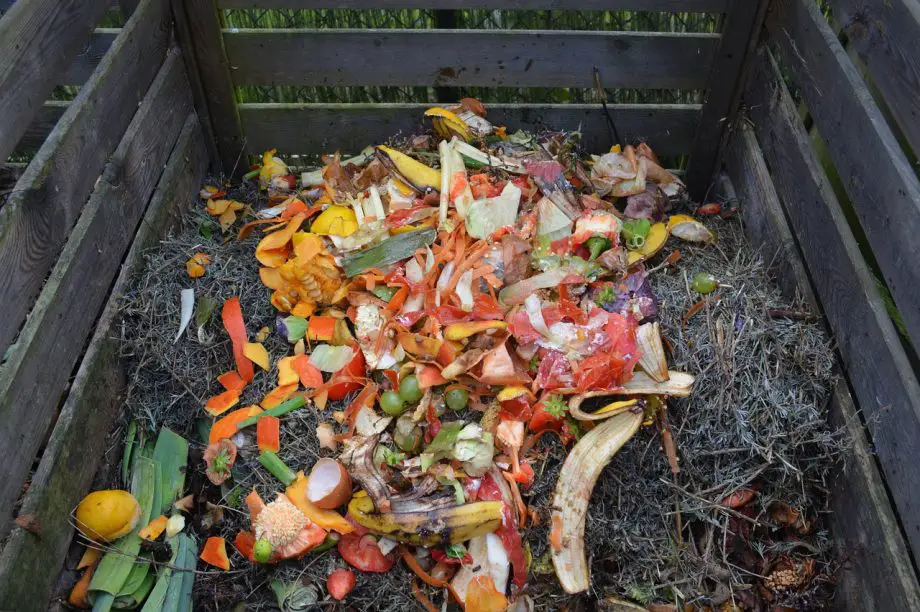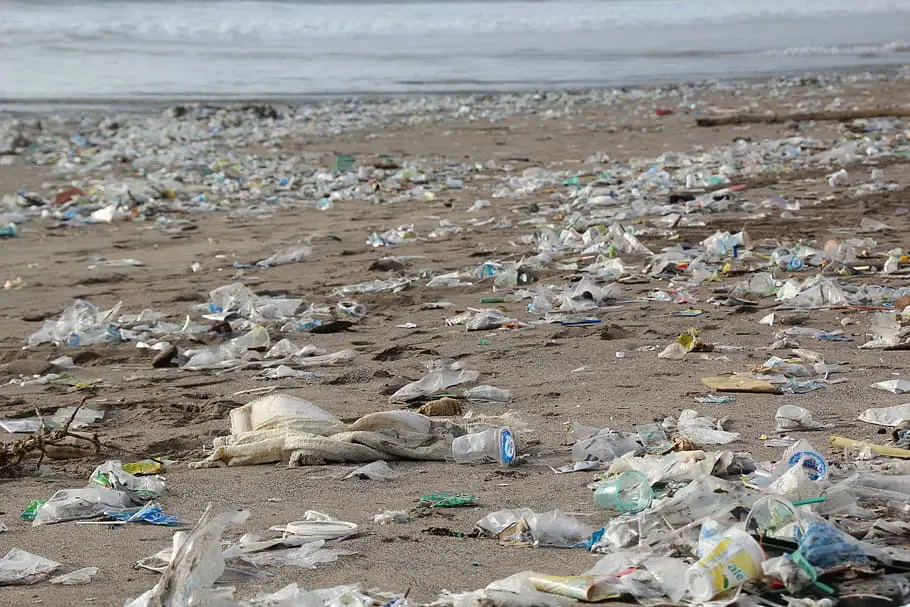
Discover easy and practical Sustainable Living Tips for Beginners. Start your journey towards a greener lifestyle today. Make a difference for tomorrow!
Welcome to the world of sustainability! If you’ve been wondering how to make your lifestyle more eco-friendly, you’re in the right place.
Our guide on Sustainable Living Tips for Beginners is designed to help you navigate this green journey.
From understanding the basics to making small changes that have a big impact, we’ve got you covered.
So, let’s dive in and start making a difference for our planet!
Sustainable Living Tips for Beginners
Embarking on a journey towards sustainability? That’s fantastic!
Our guide, Sustainable Living Tips for Beginners, is here to help you every step of the way.
We’ll delve into the basics of sustainable living, explore practical tips across various aspects of daily life, and even tackle some frequently asked questions.
From energy efficiency at home to mindful shopping, we’ve got a wealth of information to help you make a positive impact on our planet.
So, let’s get started on this exciting path to a greener lifestyle!
Definition of Sustainable Living
Let’s start with the basics. What exactly is sustainable living?
Well, in simple terms, sustainable living is all about making choices that reduce our negative impact on the environment.
It’s about living in a way that is respectful to our planet and its natural resources.
This could involve anything from the products we buy, the food we eat, the way we travel, and even the energy we use in our homes.
The goal is to create a balance, where we meet our needs without compromising the ability of future generations to meet theirs.
It’s about being mindful of our consumption and waste and making a conscious effort to minimize both.
Importance of Sustainable Living
Now, you might be wondering, why is sustainable living important.
Well, the truth is, our planet is facing some serious environmental challenges, from climate change and deforestation to plastic pollution and loss of biodiversity.
These issues are largely driven by human activities, particularly our consumption habits.
By choosing to live sustainably, we can help to reduce the demand for natural resources, cut down on waste and pollution, and lessen our individual carbon footprints.
But it’s not just about the environment. Sustainable living can also have benefits for our health, our communities, and our finances.
Plus, it can give us a sense of purpose and satisfaction, knowing that we’re doing our part to protect our beautiful planet for future generations.
Understanding the Basics of Sustainable Living
Ready to dive deeper into the world of sustainability? Great!
Before we jump into specific tips and tricks, it’s important to understand the fundamental principles that underpin sustainable living.
This section is all about laying the groundwork and giving you a solid foundation to build upon.
From the three R’s to the concept of a carbon footprint, we’re going to explore the basics that will guide your journey towards a more sustainable lifestyle.
So, let’s get started and unravel these concepts together!
The Three R’s: Reduce, Reuse, Recycle
Let’s start with the three R’s, a fundamental principle of sustainable living.
Reduce: This is all about cutting back on the amount of waste we produce.
It’s the most effective of the three R’s because, well, the best waste is the waste that never happens!
This could mean choosing products with less packaging, saying no to single-use items, or simply buying less.
Reuse: This is where we get creative! Reusing involves finding new ways to use things instead of throwing them away or recycling them.
For example, you could use glass jars for storage, turn old t-shirts into rags, or even repurpose a ladder into a bookshelf. The possibilities are endless!
Recycle: When we can’t reduce or reuse, the next best thing is to recycle.
Recycling involves taking waste and turning it into new products.
It’s important to remember that not everything can be recycled, and different areas have different recycling capabilities, so it’s always a good idea to check with your local recycling center.
The Concept of a Carbon Footprint
Now, let’s talk about carbon footprints. A carbon footprint is the total amount of greenhouse gases that are generated by our actions.
It’s usually measured in units of carbon dioxide, hence the name.
Everything we do, from driving a car to heating our homes to buying food, contributes to our carbon footprint.
Why does this matter? Well, greenhouse gases like carbon dioxide contribute to global warming, which is driving climate change.
By understanding our carbon footprint, we can identify where we can make changes to reduce our impact.
This could be anything from switching to renewable energy, eating less meat, or choosing to walk or cycle instead of driving. Every little bit helps!
Tips for Sustainable Living
Now that we’ve covered the basics, it’s time to dive into the practical stuff, the tips and tricks that will help you live a more sustainable lifestyle.
In this section, we’ll explore a variety of areas, from your home and diet to transportation and shopping habits.
Remember, sustainable living isn’t about being perfect. It’s about making better choices where we can.
So, don’t feel overwhelmed. Just pick a few tips that resonate with you and start there.
Every step you take towards sustainable living is a step in the right direction. Let’s get started!
Home and Energy
Our homes are a significant source of energy consumption, but they’re also a place where we can make substantial changes towards sustainability.
From the appliances we use to how we heat and cool our spaces, there are numerous ways to reduce energy use and make our homes more eco-friendly.
Energy-Efficient Appliances
One of the easiest ways to reduce energy consumption at home is by using energy-efficient appliances.
These appliances are designed to use less electricity, reducing both your carbon footprint and your energy bills.
Look for appliances with the Energy Star label, which is a government-backed symbol for energy efficiency.
This could be anything from your refrigerator and washing machine to your TV and computer.
Renewable Energy Sources
Switching to renewable energy sources is another great way to make your home more sustainable.
This could involve installing solar panels, using a green energy supplier, or even investing in a home wind turbine if you’re really committed!
Renewable energy sources like wind and solar power don’t deplete the earth’s resources and produce significantly less greenhouse gas emissions compared to fossil fuels.
Water Conservation
Water is a precious resource, and conserving it is an important part of sustainable living.
There are many ways to conserve water at home, from taking shorter showers and turning off the tap while you brush your teeth, to installing low-flow showerheads and toilets.
You can also collect rainwater for use in your garden or consider investing in a greywater system, which reuses water from your shower and washing machine for things like flushing toilets.
Every drop counts!
Food and Diet
Let’s move on to another crucial aspect of sustainable living, our food and diet.
What we eat and how we source our food can have a significant impact on our environment.
But don’t worry, making more sustainable food choices doesn’t mean you have to compromise on taste or nutrition.
In this section, we’ll explore how adopting a plant-based diet, reducing food waste, and choosing organic and local foods can help us live more sustainably.
Ready to dig in? Let’s go!
Plant-Based Diets
Did you know that what you put on your plate can significantly impact the environment? It’s true!
Adopting a plant-based diet is one of the most effective ways to reduce your carbon footprint.
Trying to limit your meat consumption can help. This doesn’t necessarily mean you have to go vegan or vegetarian overnight.
Even small changes, like having a meat-free day once a week or choosing plant-based options more often, can make a big difference.
Plant-based foods generally require less water and land and produce fewer greenhouse gas emissions compared to animal-based foods.
Reducing Food Waste
Food waste is a huge issue. Not only is it a waste of resources, but when food ends up in a landfill, it produces methane, a potent greenhouse gas.
We can reduce food waste by planning our meals, buying only what we need, storing food properly, and getting creative with leftovers.
Composting is another great way to deal with food waste. It turns your kitchen scraps into nutrient-rich soil for your garden.
Organic and Local Foods
Choosing organic and local foods over the grocery store or supermarket is another way to make your diet more sustainable.
Organic farming practices are designed to be more sustainable, avoiding synthetic pesticides and fertilizers, and promoting biodiversity.
Local foods, on the other hand, reduce the carbon emissions associated with transporting food from far-off places.
Plus, they’re often fresher and tastier! Check out your local farmers’ market or consider joining a community-supported agriculture (CSA) program.
Transportation
Next up on our journey to sustainable living is transportation.
The way we get around can have a big impact on our carbon footprint.
But the good news is, there are plenty of ways to make our transportation habits more sustainable, whether it’s commuting to work, running errands, or traveling long distances.
In this section, we’ll explore options like public transportation, cycling, walking, and even electric vehicles. So, buckle up, and let’s hit the road to sustainable transportation!
Public Transportation
One of the simplest ways to reduce your transportation-related carbon footprint is to use public transportation.
Buses, trams, and trains can carry many people at once, making them much more energy-efficient than individual cars.
Plus, using public transportation can often be a great way to save money and avoid the stress of traffic!
Cycling or Walking
For shorter distances, why not consider cycling or walking?
It’s a great way to get some exercise, enjoy the outdoors, and reduce your carbon emissions all at the same time.
If you live in a city, you might also have access to bike-sharing programs, which can be a convenient and affordable option.
Electric or Hybrid Vehicles
If you do need to drive, consider an electric or hybrid vehicle.
These cars produce fewer emissions than traditional gasoline or diesel cars.
Electric vehicles (EVs) run entirely on electricity, while hybrid vehicles use a combination of an electric motor and a conventional engine.
While these cars can be more expensive upfront, they can often save you money in the long run due to lower fuel and maintenance costs.
Plus, they’re a great way to help reduce air pollution and combat climate change.
Shopping
Now, let’s talk about shopping. From the clothes we wear to the products we use every day, our shopping habits can have a big impact on the environment.
But the good news is, there are plenty of ways to make our shopping more sustainable.
In this section, we’ll explore how choosing second-hand items, supporting sustainable brands, and avoiding single-use plastics can help us shop smarter and greener.
So, get ready to fill your shopping cart with sustainability!
Second-Hand Items
One of the best ways to shop sustainably is to buy second-hand items.
Not only does this save items from ending up in a landfill, but it also reduces the demand for new products, which in turn reduces the resources used and emissions produced in manufacturing.
From clothes and furniture to electronics and books, you can find almost anything second-hand.
Plus, it can be a great way to save money and find unique items!
Sustainable Brands
When you do need to buy new, consider supporting sustainable brands.
Fast fashion and the fashion industry as a whole contribute to global warming and wage exploitation in third-world countries.
So choose companies that are committed to reducing their environmental impact, whether through their manufacturing processes, their materials, or their packaging.
They might use organic or recycled materials, produce locally to reduce transportation emissions or offset their carbon footprint.
Supporting these brands can be a great way to vote with your dollar and encourage more businesses to adopt sustainable practices.
Avoiding Single-Use Plastics
Finally, try to avoid single-use plastics when shopping.
These are items like plastic bags, water bottles, straws, and packaging that are used once and then thrown away.
They’re a major source of pollution and can take hundreds of years to decompose.
Instead, opt for reusable alternatives like cloth shopping bags, refillable water bottles, and products with minimal or recyclable packaging. It’s a small change that can make a big difference!
Making Sustainable Living a Habit
As we’ve seen, there are many ways to live more sustainably.
But the key to truly making a difference is to make sustainable living a habit.
It’s about integrating these changes into our daily lives, so they become second nature.
In this section, we’ll explore how to make sustainable living a habit, from making small changes that have a big impact, to the role of mindfulness in sustainability, and overcoming challenges along the way.
So, are you ready to make sustainable living a part of your everyday life? Let’s get started!
Small Changes for a Big Impact
When it comes to sustainable living, every little bit helps. Small changes can add up to make a big impact over time.
This could be anything from turning off the lights when you leave a room, to bringing your own coffee cup to the café, to choosing a bike over a car for short trips.
Remember, it’s not about being perfect, but about making better choices where we can.
And these small changes can often be the easiest to turn into habits!
The Role of Mindfulness in Sustainability
Mindfulness plays a crucial role in sustainable living. Being mindful means being present and aware.
It’s about noticing our habits, our choices, and their impacts. When we’re mindful, we can make more conscious decisions about how we live and consume.
We can choose to buy less, to waste less, to appreciate more.
We can choose to slow down, consider the impacts of our actions, and make choices that align with our values.
Overcoming Challenges in Sustainable Living
Let’s be honest, sustainable living can sometimes be challenging.
It can be more expensive, less convenient, or simply different from what we’re used to.
But remember, it’s a journey, not a destination. It’s okay to take small steps and to make mistakes along the way.
The important thing is to keep learning, keep trying, and keep making progress.
And remember, every step towards sustainability, no matter how small, is a step in the right direction.
Sustainable Living Tips for Beginners FAQs
We’ve covered a lot of ground, but you might still have some questions about sustainable living. That’s great!
Asking questions is a crucial part of learning and growing. In this section, we’ll tackle some of the most frequently asked questions about sustainable living.
From simple lifestyle changes to examples of sustainable living, we’ve got the answers you’re looking for. Let’s dive in!
Q: How do you live a simple sustainable lifestyle?
A: Living a simple sustainable lifestyle is all about making mindful choices.
This could involve reducing your consumption, reusing items instead of throwing them away, recycling, choosing local and organic foods, using energy-efficient appliances, and opting for public transportation or cycling over driving.
Remember, it’s not about being perfect, but about making better choices where you can.
Q: What are 10 ways to be more sustainable?
A:
Reduce your consumption: Buy only what you need and use what you buy.
Reuse items: Before throwing something away, think if it has another use.
Recycle: If you can’t reduce or reuse, recycling is the next best option.
Choose local and organic foods: They’re often fresher and have a lower carbon footprint.
Use energy-efficient appliances: They can significantly reduce your home’s energy use.
Opt for public transportation, cycling, or walking: These are more sustainable than driving.
Save water: Take shorter showers and turn off the tap while brushing your teeth.
Switch to renewable energy: Consider installing solar panels or using a green energy supplier.
Support sustainable brands: These companies are committed to reducing their environmental impact.
Educate others: Share your knowledge and inspire others to live more sustainably.
Q: What are 5 ways to be sustainable?
A:
Reduce waste: This includes reducing your consumption, reusing items, and recycling.
Choose sustainable transportation: Opt for public transportation, cycling, or walking over driving.
Eat a plant-based diet: Plant-based foods have a lower environmental impact than animal-based foods.
Conserve water: Be mindful of your water use and try to reduce it where you can.
Buy second-hand: Buying second-hand items reduces the demand for new products and prevents items from ending up in a landfill.
Q: What are 3 examples of living sustainably or being sustainable?
A:
Composting kitchen scraps: This reduces food waste and creates nutrient-rich soil for your garden.
Using a reusable water bottle: This reduces the demand for single-use plastic bottles.
Choosing a green energy supplier: This reduces your home’s carbon footprint and supports the renewable energy industry.
Sustainable Living Tips for Beginners Final Thoughts
We’ve journeyed through the world of sustainable living, exploring everything from the basics to practical tips and common questions.
But as we draw to a close, remember that this is just the beginning of your sustainability journey.
In this final section, we’ll wrap things up and leave you with some final thoughts and encouragement for your journey toward sustainable living.
So, let’s take a deep breath and reflect on what we’ve learned and where we’re headed.
Encouragement for the Journey Towards Sustainable Living
As we wrap up, I want to leave you with a word of encouragement. Embarking on a journey towards sustainable living is a commendable decision.
It’s a journey of learning, growth, and positive impact. It’s about making choices that are not just good for you, but also good for our planet and future generations.
Remember, sustainable living isn’t about perfection. It’s about progress.
It’s about making small changes that add up over time. It’s about doing what you can, with what you have, where you are.
So, don’t be too hard on yourself if you make mistakes or if change doesn’t happen overnight.
Celebrate your wins, no matter how small they may seem.
Maybe you remembered to bring your reusable shopping bags to the store, or you chose a plant-based meal over a meat one.
These are all steps in the right direction.
And finally, remember that you’re not alone in this journey.
There’s a whole community of people out there who are striving to live more sustainably.
Reach out, share your experiences, learn from others, and keep going.
You’re making a difference. You’re part of the solution. And that’s something to be proud of.
So, keep going, keep growing, and keep making choices that make our world a better place.
Here’s to your journey toward sustainable living!
Read more: Sustainable Lifestyles






